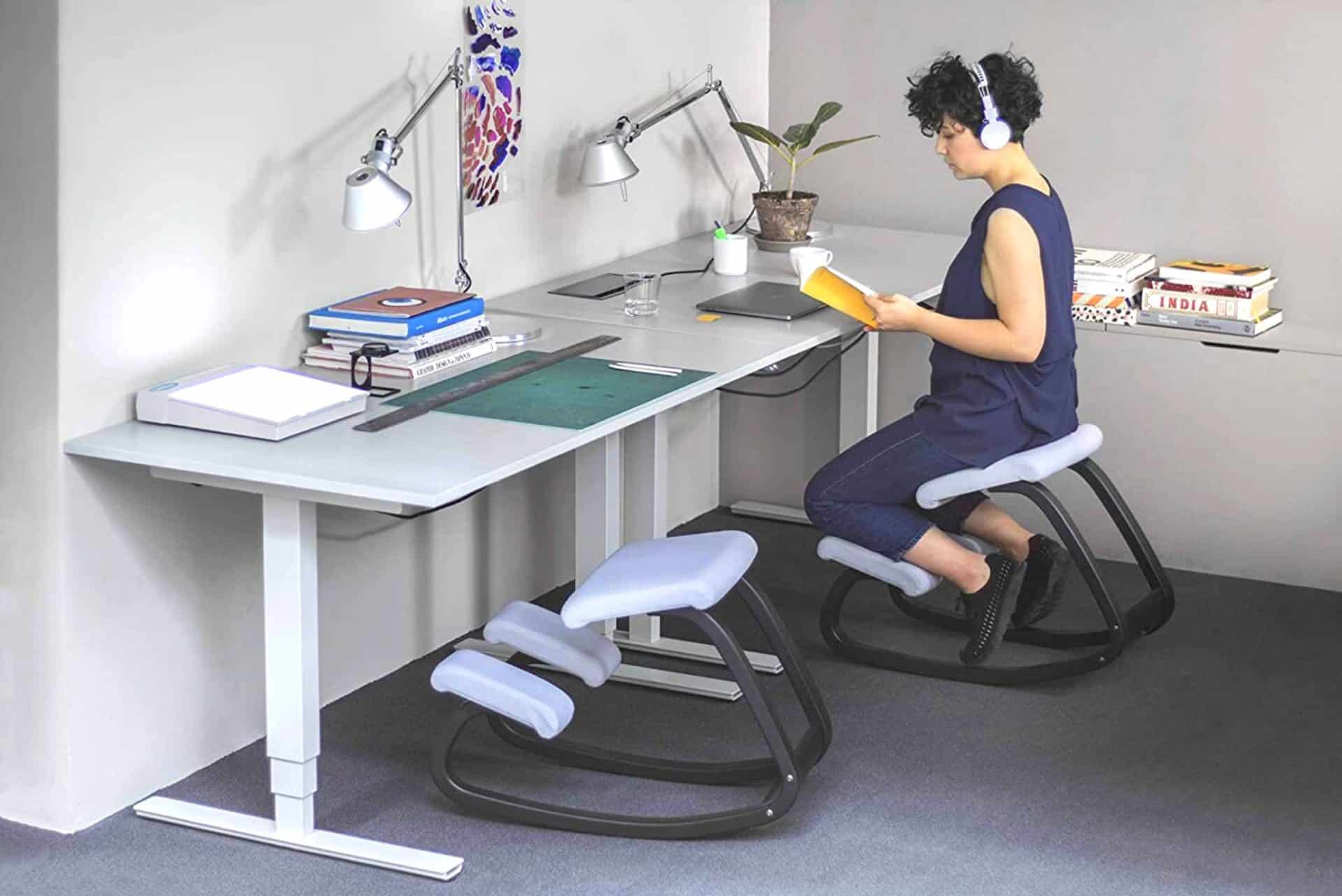62% of people are currently suffering from musculoskeletal (MSK) issues like back pain as a result of sitting at a desk all day. Many of these desk workers are jumping on the ‘active sitting’ trend, swapping their traditional office chairs for alternative ergonomic seating like kneeling chairs and sit-stand stools.
What is active sitting?
Active sitting is a way of keeping your body moving whilst seated, rather than sitting in a static position like you would on a traditional office chair. Active sitting chairs and stools often have an unstable seat and lack of supportive features like a backrest or armrests. This design encourages your muscles to work harder to keep yourself upright and stable in your seat.
Active seating options are designed to encourage the natural movements you make while standing and walking. They are intended to offset the risks of prolonged sitting and improve posture, circulation and energy levels.
The popularity of the active sitting trend has surged in recent years. More and more people are becoming aware of its potential benefits for reducing workplace MSK pain.
The pros and cons of 4 popular active seating options
Before you jump on the active sitting bandwagon, it’s important to consider the pros and cons of these alternative seating options. Let’s take a closer look at kneeling chairs, core chairs, sit-stand stools and balance discs:
1. Kneeling chairs
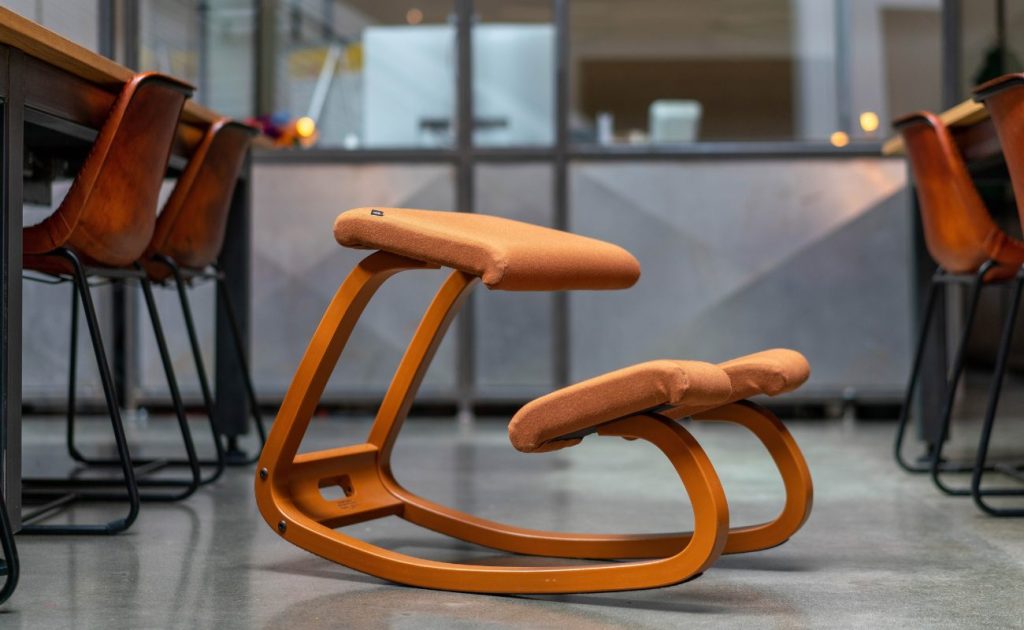
Kneeling chairs are designed with the base seat angled forwards, an additional support for your knees and typically no back support or arm rests, requiring you to sit in a kneeling position. The chair balances your pelvis and activates your core and back muscles to keep you upright.
Pros:
- Sitting in a kneeling position engages your core muscles, improving your stability over time.
- Kneeling chairs force you into an upright position, which helps to strengthen your postural muscles in your back, shoulders and neck, reducing the risk of back pain.
Cons:
- The kneeling position can put greater pressure on your knees and may exacerbate existing knee pain.
- You have limited spinal rotation and movement whilst in a kneeling position, which may not be suitable if you need to move around a lot for your day to day work.
- There are no arm rests to support your arms, which can increase your risk of shoulder strain.
Kneeling chairs can be useful as a short-term seating option, but we don’t recommend using them for more than 2 hours at a time due to the risks outlined above.2. Core chairs
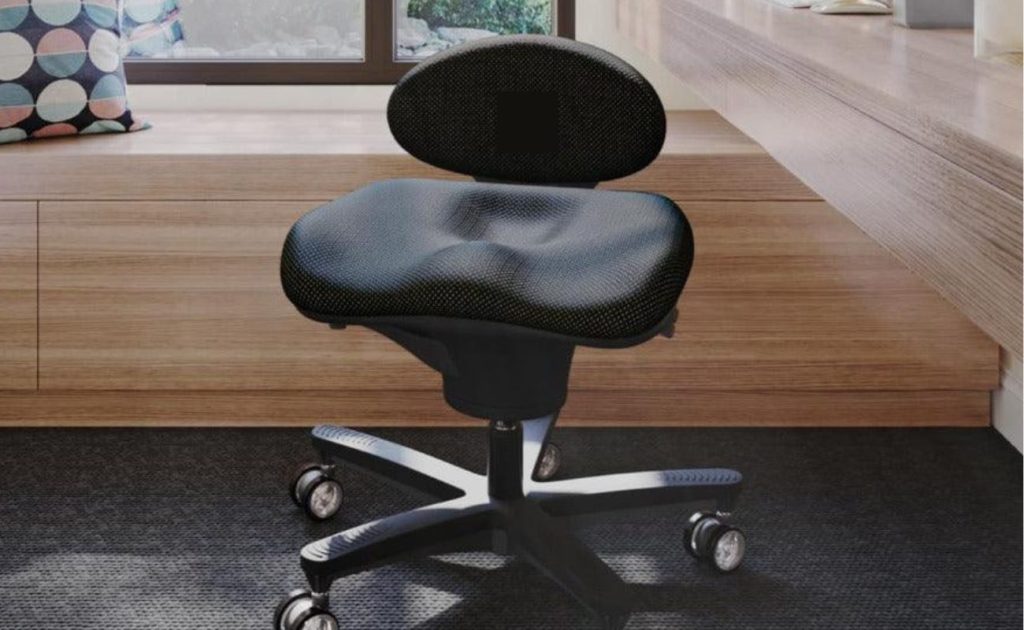
Core chairs are designed to keep you active throughout the working day. They have an unstable seat that allows you to move gently from side to side, whilst also supporting your pelvis. The constant gentle movement improves your circulation and engages your muscles.
Pros:
- The dynamic nature of core chairs can help increase your blood flow and circulation, which can boost your energy levels and cognitive function.
- Core chairs promote a more upright and natural posture. This activates and strengthens your core and reduces strain on your back and neck.
Cons:
- Core chairs offer limited back support, which may cause discomfort when used for long periods of time.
- The lack of arm rests may increase your risk of shoulder strain.
There is limited evidence to prove core chairs are useful in reducing existing pain, but they certainly provide a safer alternative to working on a wobbly swiss ball. 3. Sit-stand stools
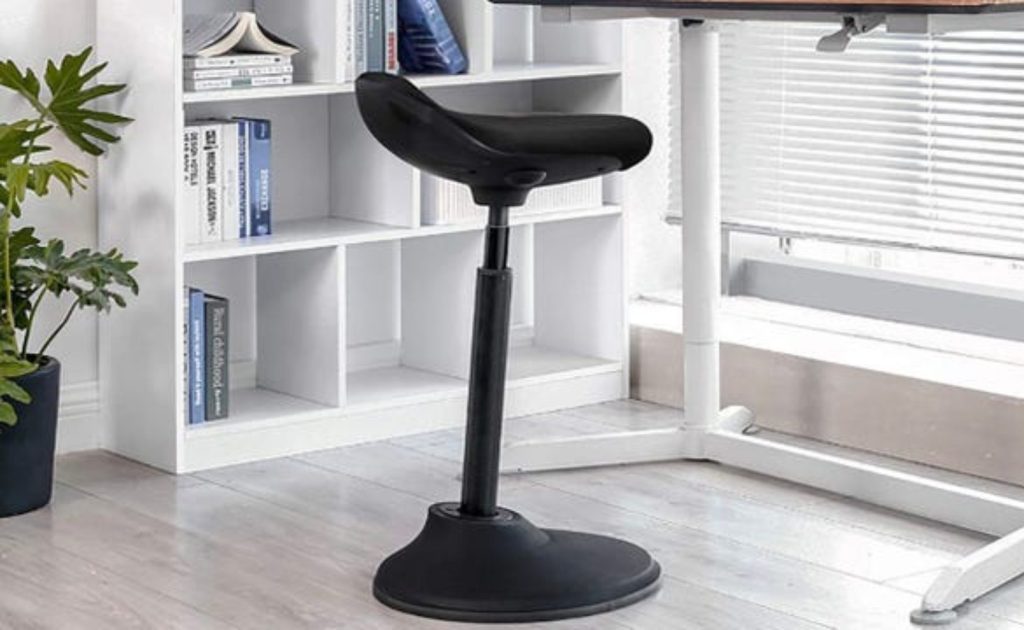
Sit-stand stools have a tilting seat mechanism. They allow you to rest your weight against the seat whilst still being in a standing position. Sit-stand stools are useful for people who need to stand for their jobs or frequently alternate between sitting and standing.
Pros:
- Sit-stand stools encourage a semi-standing position. Working in this position is easier on your muscles than standing, as the weight is taken off your lower back.
- Getting up from a sit-stand stool puts less pressure on your knees compared to getting up from a standard desk chair.
Cons:
- Seats on sit-stand stools tend to be less comfortable than traditional office chairs.
- The lack of arm rests may increase your risk of shoulder strain.
- Sit-stand stools do not have wheels, which can limit and restrict your movement.
Sit-stand stools are proven to reduce discomfort compared to standing alone, but like kneeling chairs we would only recommend using them for short periods of time. 4. Balance discs
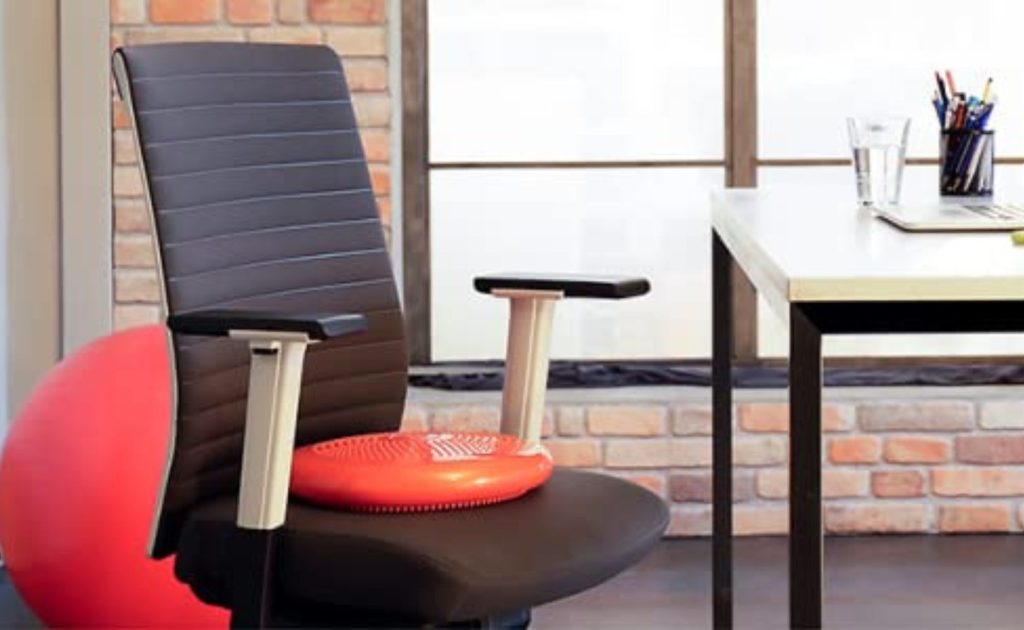
Balance discs are usually made of rubber with one smooth side and one knobbly side to encourage active sitting. Sitting on a balance disc may feel unsteady and wobbly. This unsteadiness helps to strengthen your muscles, as you subconsciously stabilise yourself in your seat.
Pros:
- Sitting on a balance disc engages your core muscles, improving your strength and stability over time.
- Balance discs promote small movements and shifts in weight, which can improve your blood flow and circulation.
Cons:
- Transitioning to a balance disc may require an adjustment period for your body to adapt to the unstable surface. This can cause muscle fatigue.
- The instability of balance discs may further predispose you to back pain and may not be suitable for people with pre-existing musculoskeletal conditions or balance issues.
There is limited evidence of the benefits of balance discs as a seat cushion, but they have been proven as a useful tool for stability exercises away from your desk! 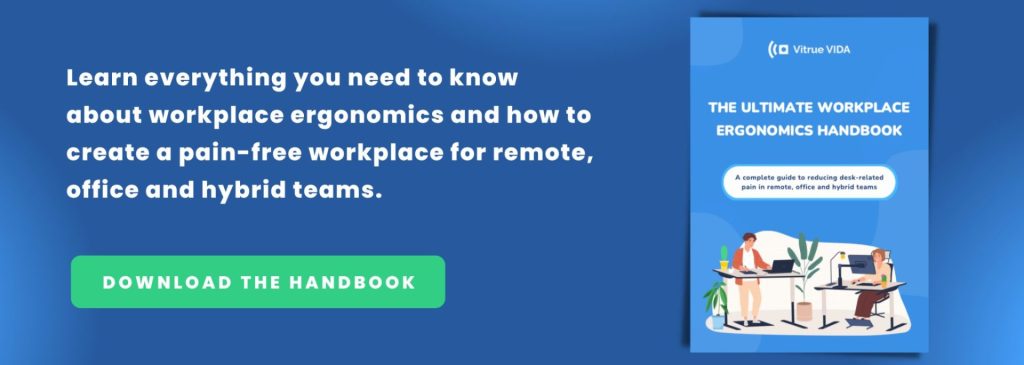
Our brand new Ultimate Workplace Ergonomics Handbook will help you and your team understand everything you need to know about workplace ergonomics. Download it today and learn how to create a safer, healthier working environment, no matter where you work!

